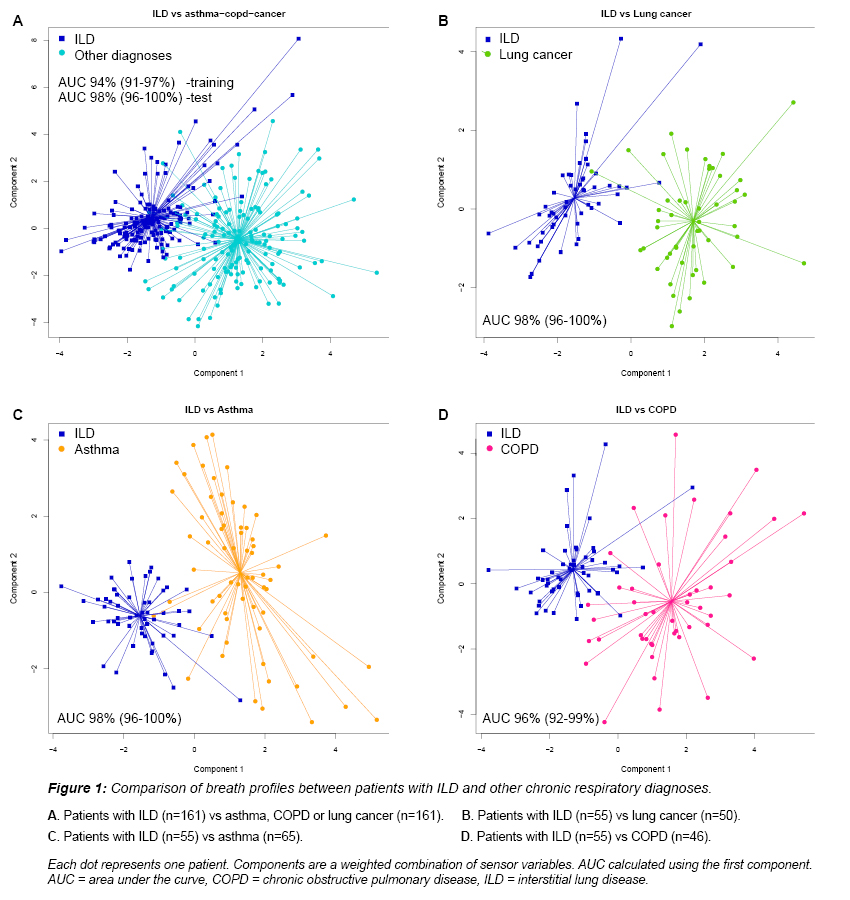Abstract
Introduction
Diagnosis of interstitial lung disease (ILD) is often delayed. Electronic nose (eNose) sensor technology profiles exhaled volatile organic compounds and has potential to identify ILD noninvasively. We evaluated whether an eNose can distinguish patients with ILD from patients with other chronic respiratory diseases.
Methods
Patients with ILD, asthma, chronic obstructive pulmonary disease (COPD) and lung cancer were included in a cross-sectional study in a secondary and tertiary healthcare centre, regardless of stage or treatment. Exhaled breath analysis using an eNose (SpiroNose) was performed. Group sizes were matched by random patient selection. Data were analysed with partial least squares discriminant and receiver operating characteristic analyses.
Results
161 patients with ILD (62.7% male, mean age 67.8 (±11.8)) and 161 patients with asthma (n=65), COPD (n=46) or lung cancer (n=50) (41.6% male, mean age 61.5 (±15.6)) were included. Breath profiles of patients with ILD and other diagnoses differed with an AUC of 94% (95%CI 91-97) in the training and 98% (95%CI 96-100) in the test set. Moreover, ILD could be discriminated from the other individual diagnoses with a mean AUC of 96-98% (Figure 1).
Conclusions
eNose technology can distinguish patients with ILD from patients with other chronic respiratory diagnoses. This could facilitate earlier diagnosis and referral of patients suspected for ILD.
